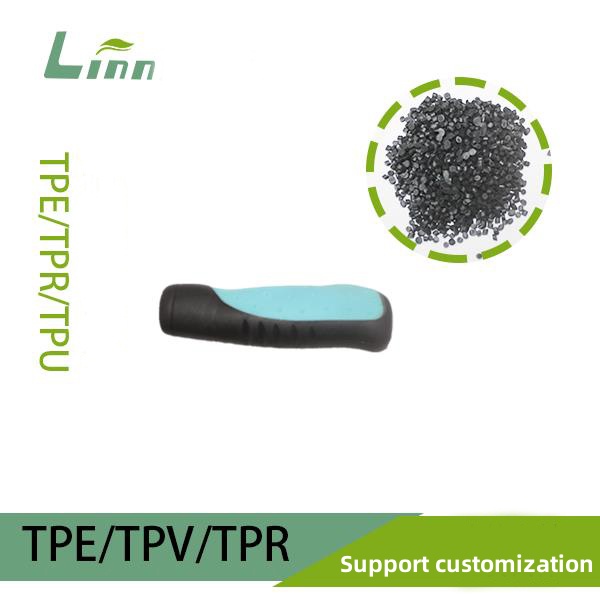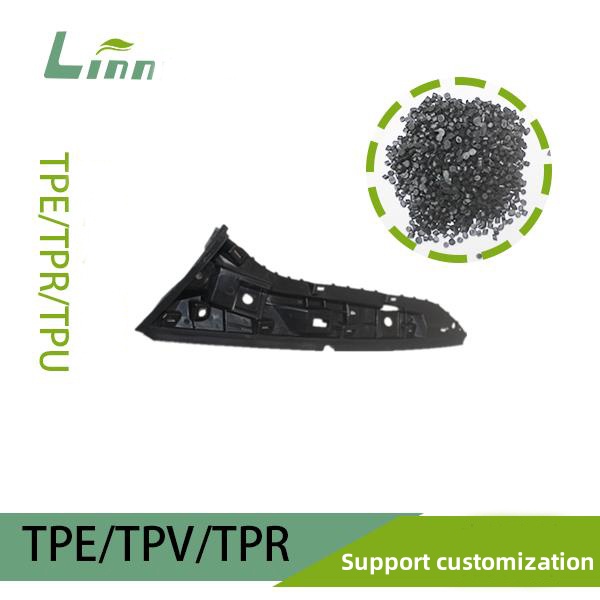I’ll never forget the day I walked into a bustling shoe manufacturing plant, where the production manager pulled me aside with a mix of excitement and frustration. They were trying to create a new sole material that balanced TPU’s durability with TPR’s affordability. “Can we just mix them?” he asked, pointing to bags of TPU and TPR pellets. That question sent me down a rabbit hole of polymer chemistry, blending trials, and lessons learned the hard way. Mixing TPU and TPR isn’t as simple as tossing them into a blender, but it’s not impossible either. Let me take you through the process, from the science behind it to practical tips for making it work.
What Are TPU and TPR?
To answer whether TPU and TPR can be mixed, we need to understand their properties and differences.
TPU (Thermoplastic Polyurethane): TPU is a high-performance elastomer known for its excellent abrasion resistance, flexibility, and toughness. It’s used in demanding applications like phone cases, medical devices, and high-end shoe soles. TPU’s structure, based on polyurethane chemistry, gives it a polar, resilient nature with a hardness range of Shore A 60 to Shore D 50.
TPR (Thermoplastic Rubber): TPR is a broad term for materials that combine rubber-like elasticity with plastic processability. Often based on styrene-butadiene-styrene (SBS) or styrene-ethylene-butylene-styrene (SEBS), TPR is cost-effective, lightweight, and flexible, making it ideal for budget-friendly products like casual shoe soles and toys. Its hardness typically ranges from Shore A 20 to 90.
Early in my career, I worked on a project comparing TPU and TPR soles. TPU offered superior durability but was pricier, while TPR was softer and cheaper but less resistant to wear. The idea of mixing them is tempting: could you combine TPU’s strength with TPR’s affordability? Let’s find out.

Why Mix TPU and TPR?
In my years consulting for manufacturers, I’ve seen several reasons why companies want to blend TPU and TPR:
Cost Optimization: TPU is expensive, often costing 2-3 times more than TPR. Mixing in TPR can lower material costs while retaining some of TPU’s performance.
Balanced Properties: A TPU-TPR blend could offer a mix of TPU’s toughness and TPR’s softness, ideal for applications like shoe soles or flexible grips.
Sustainability: Blending recycled TPU or TPR can reduce waste, aligning with eco-friendly manufacturing trends.
Custom Performance: Adjusting the blend ratio could tailor properties like flexibility, grip, or durability to specific needs.
But here’s the rub: TPU and TPR don’t naturally mix well due to their chemical differences. Let’s dig into the science to see why.
The Science of Mixing TPU and TPR
1. Polymer Compatibility: A Tricky Match
TPU and TPR have different molecular structures, which makes blending them challenging. TPU’s polyurethane backbone is polar, meaning its molecules have regions of positive and negative charge that influence bonding. TPR, especially SBS-based TPR, is typically non-polar, leading to immiscibility—the two materials tend to separate rather than form a uniform blend.
I once ran a trial blending TPU and TPR without any additives, and the result was a mess: a lumpy, phase-separated material that was brittle and unusable. This taught me that compatibility is the biggest hurdle when mixing these two.
2. Role of Compatibilizers
To overcome immiscibility, you need a compatibilizer—a material that acts like a mediator, helping TPU and TPR bond. Common compatibilizers include:
Maleic Anhydride-Grafted SEBS (SEBS-g-MAH): This modifies TPR to improve its interaction with TPU’s polar structure.
Ethylene-Vinyl Acetate (EVA): EVA can act as a bridge, enhancing miscibility in some TPU-TPR blends.
In a project I worked on, adding SEBS-g-MAH to a TPU-TPR blend improved tensile strength by 25% and reduced phase separation. Compatibilizers are game-changers, but they need to be chosen carefully.
3. Processing Conditions
Mixing TPU and TPR requires precise control over temperature, shear rate, and mixing time. TPU melts at 180-220°C, while TPR (depending on its base) melts at 160-200°C. These overlapping ranges make blending possible, but you must avoid overheating, which can degrade TPU’s polyurethane chains.
I once observed a compounding process where a twin-screw extruder was used to blend TPU and TPR at 190°C with high shear. The result was a smooth, consistent material, proving that equipment and process parameters are critical.
Practical Applications of TPU-TPR Blends
Where do TPU-TPR blends shine? Here are some applications I’ve seen in the industry:
Footwear Soles: A TPU-TPR blend can create soles that balance TPU’s durability with TPR’s softness, ideal for budget-friendly athletic or casual shoes.
Flexible Grips: Tool handles or sports equipment grips can benefit from a TPU-TPR blend’s toughness and comfort.
Wearable Devices: Blends can be used for straps or components that need flexibility and abrasion resistance.
Automotive Parts: Interior components like mats or seals can use TPU-TPR blends for cost-effective performance.

Comparison of TPU, TPR, and Their Blend
To give you a clearer picture, here’s a table comparing TPU, TPR, and a typical TPU-TPR blend:
|
Material |
Hardness (Shore A) |
Key Properties |
Common Applications |
|---|---|---|---|
|
TPU |
60-90 (up to Shore D 50) |
Tough, abrasion-resistant, flexible |
Phone cases, medical devices |
|
TPR |
20-90 |
Soft, cost-effective, lightweight |
Casual shoe soles, toys |
|
TPU-TPR Blend |
50-80 |
Balanced toughness and flexibility |
Budget soles, grips, seals |
This table shows that a TPU-TPR blend can offer a compromise, combining some of TPU’s durability with TPR’s affordability and softness.
Challenges of Mixing TPU and TPR
Mixing TPU and TPR isn’t without its pitfalls. Here’s what I’ve seen go wrong and how to address it:
1. Phase Separation
Without a compatibilizer, TPU and TPR can separate into distinct phases, resulting in a weak, inconsistent material. Solution: Use SEBS-g-MAH or EVA as a compatibilizer and ensure high-shear mixing.
2. Compromised Properties
Blending can reduce TPU’s abrasion resistance or TPR’s softness. I once worked with a client whose TPU-TPR blend was too stiff for their application. Solution: Adjust the blend ratio (e.g., 60:40 TPU to TPR) and test for desired properties.
3. Processing Costs
Compatibilizers and high-shear equipment like twin-screw extruders can increase costs. Solution: Conduct small-scale trials to optimize the blend before scaling up.
4. Thermal Degradation
Overheating can degrade TPU’s polyurethane chains, weakening the blend. Solution: Keep processing temperatures below 200°C and monitor residence time in the extruder.

How to Successfully Mix TPU and TPR: Practical Tips
Drawing from my experience, here are my top tips for blending TPU and TPR effectively:
1. Select the Right Compatibilizer
Choose a compatibilizer like SEBS-g-MAH or EVA based on your TPU and TPR formulations. Work with your material supplier to find the best match.
2. Optimize the Blend Ratio
The TPU-to-TPR ratio depends on your application. For flexible products like shoe soles, a 60:40 or 70:30 TPU-to-TPR ratio works well. For tougher applications, increase the TPU content. Test multiple ratios to find the optimal balance.
3. Use High-Quality Equipment
A twin-screw extruder is ideal for blending TPU and TPR, as it provides high shear and uniform mixing. Set temperatures between 180-200°C to avoid degradation.
4. Test Extensively
Conduct mechanical testing (e.g., tensile strength, elongation, and hardness) to ensure the blend meets your requirements. I’ve seen factories save thousands by catching issues during pre-production testing.
5. Consider Additives
Additives like plasticizers (for flexibility) or fillers (like calcium carbonate for cost reduction) can fine-tune the blend’s properties. Be cautious, as excessive additives can weaken the material.
Industry Trends and Insights
The polymer industry is buzzing with innovation, and blending materials like TPU and TPR is part of the push for cost-effective, high-performance solutions. According to Grand View Research, the global TPU market was valued at $2.5 billion in 2023, with growing demand in footwear and automotive sectors. TPR, meanwhile, remains a staple for budget-conscious applications.
I’ve noticed a trend toward sustainable blending, with manufacturers using recycled TPU or TPR to reduce environmental impact. The Ellen MacArthur Foundation emphasizes circular economy practices, and TPU-TPR blends can fit this model if sourced responsibly. However, recycled materials can introduce variability, so rigorous testing is a must.
My Experience with TPU-TPR Blends
Let me share a story from my career. A few years ago, I consulted for a company developing a budget-friendly running shoe sole. They wanted TPU’s durability but couldn’t afford its high cost. We experimented with a 70:30 TPU-to-TPR blend, using SEBS-g-MAH as a compatibilizer. After optimizing the extruder settings (190°C, high shear), we created a sole that was 20% cheaper than pure TPU yet durable enough for casual runners. The project was a success, and it reinforced my belief that TPU-TPR blends can be a game-changer with the right approach.
Closing Thoughts: Mixing TPU and TPR Is Possible with Care
To wrap up, TPU and TPR can be mixed, but it requires overcoming their chemical incompatibility with compatibilizers, precise processing, and thorough testing. Whether you’re aiming to cut costs, enhance performance, or explore sustainable options, a TPU-TPR blend can deliver if done right.
As someone who’s spent years tinkering with polymers, my advice is to start small, invest in quality compatibilizers, and test relentlessly. If you’re a manufacturer or designer exploring TPU-TPR blends, I hope this guide gives you the confidence to experiment. Got more questions about polymer blending? I’m all ears—let’s dive into the world of materials together!

FAQs
Q1: Is mixing TPU and TPR cost-effective?
A: Yes, blending TPR with TPU can lower costs, as TPR is cheaper. However, compatibilizers and specialized equipment may add to expenses, so test cost savings in small-scale trials.
Q2: Can TPU-TPR blends be used for high-performance applications?
A: They’re better suited for moderate-performance applications like casual shoe soles or grips. For high-performance needs, pure TPU may be a better choice due to its superior durability.
Q3: What equipment is best for mixing TPU and TPR?
A: A twin-screw extruder is ideal for its high shear and uniform mixing. Single-screw extruders may not provide enough blending efficiency.
Q4: Are TPU-TPR blends eco-friendly?
A: They can be if using recycled TPU or TPR. Ensure material consistency and test for performance to avoid issues with recycled materials.





